140 years of the heroic defense of Shipka
prehistory
After forcing the Danube and seizing a bridgehead, the Russian army could proceed with the implementation of a further task - the development of an offensive for the Balkans in the direction of Constantinople-Istanbul. From the forces of the Danube army, concentrated on the bridgehead, three detachments were formed: the Forward, the Eastern (Ruschuksky) and the Western. The forward detachment (the smallest) under the command of Lieutenant-General I. V. Gurko, which included the Bulgarian militia, was to advance to Tarnovo, seize the mountain passes through the Balkan Mountains, including capture the Shipka Pass, redeploying part of the troops behind the Balkan Range , that is, in the southern districts of Bulgaria. That is, to create conditions for a breakthrough to Adrianople and Constantinople.
The detachment went on the offensive 25 June (7 July) 1877, and, overcoming the weak resistance of the enemy, on the same day freed the ancient capital of Bulgaria - Tarnovo. From here he forced the hard-to-reach, but unguarded Khinkoisky pass and went to the rear of the enemy, located on Shipka. Russian troops and Bulgarian militia defeated the enemy in a series of battles and 5 (17) in July Gurko came from the southern side to Shipka Pass, occupied by the Turkish garrison (about 5 thousand people) under the command of Hulius Pasha.
The Russian command planned to seize the Shipka Pass with a simultaneous attack from the south by a detachment of Gurko and from the north by the newly formed Gabrovo detachment of Major General V. F. Derozhinsky. July 5-6 (17-18) in the area of Shipka turned into stubborn fights. The Turks fought off the Russian attacks, as the two detachments attacked separately and could not organize a simultaneous strike. In addition, the Russian command underestimated the enemy. However, the Ottomans, considering it impossible to continue to hold well-fortified positions, on the night of 7 (19) in July left their fortifications, moving along the mountain paths to Philippopol (Plovdiv). On the same day, the Shipka Pass was occupied by Russian troops.
Thus, the detachment Gurko completed his task. The path beyond the Balkan Range and Istanbul was open. However, the Russian army did not have a second echelon and a strategic reserve to develop the first success. Numerous troops of the Danube army on the left and right wings were connected in the area of the quadrilateral fortresses and Pleven. A small detachment Gurko could not continue the offensive on their own.
Before the detachment Gurko faced the task to cover the main forces of the Russian army and keep the Russians passes, the passage through the Balkan line. It was decided to advance to Nova Zagora and Stara Zagora, to take up defensive positions on this frontier, covering the approaches to the Shipka and Hinkoi passes. Performing the task, the troops of the 11 Forward Detachment (23) of July liberated Stara Zagora, and the 18 (30) of July - Nova Zagora.
Meanwhile, the Ottoman command recovered from the first failures and took extraordinary measures to rectify the situation and go on the offensive. In particular, the body of Suleiman Pasha, who had earlier fought with the Montenegrins, was thrust at forced rates to the Balkans. The first battle with Suleiman Pasha's troops took place on July 19 (31) near Eski-Zaha (Stara Zagora). Shoulder to shoulder with the Russian warriors, the Bulgarian militia selflessly fought. Russian soldiers and Bulgarian militia, led by Major General N. G. Stoletov, stubbornly resisted. But the forces were unequal. Gurko's detachment was forced to retreat to the passes and join the troops of Lieutenant-General F. F. Radetsky, who defended the southern sector of the front. After Gurko’s departure from Zabalkania, Shipka entered the southern front of the Russian army assigned to the troops of General Radetsky (8 Corps, part of 2, 4-Rifle Brigade and Bulgarian Militia). The defense of Shipka was entrusted to the newly created Southern Detachment under the command of Major-General N. G. Stoletov, a third of whom were Bulgarian militiamen.
July 21 (2) August 1877, the war minister D. A. Milyutin in a note to Tsar Alexander the Second, suggested temporarily abandoning offensive operations until the arrival of strong reinforcements and the concentration of the existing forces scattered on a large front. Before that, it was necessary to go on the defensive and retain advantageous positions. On July 22 (August 3), the king sent a note to Milutin, commander-in-chief of the Danube army, with a postscript: expect suitable reinforcements before thinking of a further attack. ”
Thus, the general situation on the Balkan front at that time was not in favor of the Danube army. Its offensive in divergent directions led to a dispersal of forces, the effect of surprise and disorganization with elements of panic in the Turkish army was not fully utilized, the interaction between individual Russian troops was disrupted. The right flank of the Russian army is stuck under Plevna. Small reserves have been expended. The good plan of the “Russian Blitzkrieg” turned out to be unsecured with the necessary forces and reserves. The Turks got the time and opportunity to recover after the rapid fall of the Danube defense line and organize a counter-offensive.
Protection of the "Eagle's Nest" by orlovtsy and Bryantsev 12 August 1877 of the year. A. N. Popov, 1893
Transition of the Turkish army to the counteroffensive
The failure of the Russian troops in Zabalkanie and during the storming of Plevna caused great joy in Constantinople. Sultan, the Minister of War and the Supreme Military Council decided that it was time to launch a counteroffensive in order to send Russian troops into the Danube. This task was planned by a concentric attack on the Russian Danube army from three sides: the army of Osman Pasha from Pleven, the East Danube army led by its new commander-in-chief Mehmet-Ali-Pasha, from Razgrad and the army of Suleiman Pasha from the south.
It was decided that Suleiman Pasha would launch an attack on Shipka. Mehmet Ali Pasha expressed only a “wish” about his support for Suleiman Pasha’s offensive. Thus, the coming offensive action was supposed to begin the army of Suleiman Pasha in Shipka direction. The supreme Turkish command set the army Suleiman Pasha the task of seizing the pass, and then, developing the offensive to the north, to unite with the main forces of the Turkish troops located in the region of Ruschuk, Shumla and Silistraya, defeat the Russian troops and throw them over the Danube.
This is not to say that this was the best decision of the Ottoman Supreme Command. The best option was to join the forces of Suleiman Pasha Mehmet Ali Pasha and deliver a joint blow to the left flank of the Danube Army. Or to unite with the army of Osman Pasha, bypassing Shipki through western passes (for example, Arab-Konak). As a result, Suleiman Pasha was now to strike at the most inaccessible position of the Russian troops.
By August 11, the Balkan army of Suleiman Pasha included 75 battalions, 5 squadrons, 1500 Circassians, and a significant number of bashi-bazouks. The total number of army without bashibuks reached 37,5 thousand people. Leaving Suleiman Pasha in Yeni-Zgra, Slivne, Kotl, Tvarditsa and the Khinkoi part of the army, he made 27 thousand soldiers, not counting the irregular troops. 18 August the Ottomans occupied Kazanlak. All the multi-day movements of the Turkish Balkan army due to poor intelligence turned out to be a secret for the Russian command. The command of the Danube army and the Balkan detachment failed to timely identify the movement of the Balkan army towards Shipka.
Bulgaria. National Park Museum at the Shipka Pass. "Steel" battery
The organization of the defense of mountain passes
Having decided to go on the defensive on the whole front, the Russian command paid special attention to the retention of mountain passes. The Balkan mountain passages were defended by the 8 corps, parts of the 11 corps and some other troops that were not part of the corps organizationally. At the head of the Southern Front or the Balkan detachment was Fedor Fedorovich Radetsky. In total, under the command of Radetzky, by August 13 there were 40 battalions, 6 squads of the Bulgarian militia, 35 hundreds and squadrons with 179 guns. Total detachment Radetzky counted 46-48 thousand people.
The Russian corps, outwardly quite strong, was dispersed by small detachments over the length of 120 km. On the extreme right flank, in Selvi, stood a squad of Svyatopolk-Mirsky of nine battalions and six hundred with 26 guns (9 thousand people). This detachment covered the direction from Lovcha to Tarnovo, provided the right flank of the Balkan detachment and connected it with the Western detachment. To the east, there was the Gabrovsky Derozhinsky detachment, which consisted of three battalions of the Orlovsky regiment, six detachments of the Bulgarian militia, seven hundred and 29 guns (6,5 thousand people). The main forces of the detachment defended the Shipka Pass, and also observed the Travno Pass and the mountain paths between these passes. Farther east, stood the Khinkoi detachment of Colonel Groman, with a force of three battalions, two hundred, and 16 guns (3,5 thousand people); detachment defended Khainokoy passage. In Yelena and Zlataritsa there was a Boreish squad of three battalions, five squadrons and hundreds, ten guns (3,6 thousand people); the detachment defended the Tvarditsky Pass and the Demir-Kapu Pass. On the extreme left flank of Kesarov was Osman-Bazarsky detachment of General Raden of eight battalions, 12 squadrons and hundreds and 32 guns (10 thousand people). This detachment covered the left flank of the Southern Russian Front and the way to Tyrnov from Osman Bazar.
In addition, Tyrnovo had a general reserve of the Southern Front as part of the 4 Infantry Brigade, 55 Podolsky and 56 Zhytomyr Infantry Regiments of the 14 Division and 42 of the Yakutsk Regiment of the 11 Infantry Division and the XNUM-Yanthennian Infantry Division and the XNUM-Yanthennian Infantry Division. regiment. Total 41 battalions, 14 hundreds, 4 guns (about 66 thousand people). At the head of it stood M. I. Dragomirov.
The general idea of General Radetzky was that a timely maneuver of a strong reserve would repel any sudden attack of the enemy. However, this plan was risky. From Tyrnov to Selvi there were two transitions (53 km), to Shipka - 2 1 / 2 transitions (65 km), to Hainkoia — 2 transitions (47 km), to Elena - 1,5 transition (37 km) and to Kesarova - one transition (27 km). As a result, at the beginning of the second day after the performance, the reserve with ordinary transitions could only keep up with the Helensky and Osman-Bazarsky detachments. The reserve could come to the aid of Khainokioyok and Selvinsky at the beginning of the third day. And to the most convenient and most important of the mountain passes - Shipkinskoye - only at the end of the third - the beginning of the fourth day. Thus, the defenders of the Shipka Pass for at least three days should have been kept without any help.
Another mistake of the Radetzky defense plan was the unsuccessful deployment of troops: more than 40% of all forces were in the detachments providing the flanks of the Russian Southern Front, 30% was in reserve, and only about 30% of all forces remained on the detachments that directly covered the aisles. The flank detachments had excessive forces and means, as they could be quickly supported not only from the general reserve of the Southern front, but also from the Western and Ruschuksky detachments (two transitions). And by reducing flank detachments, it would be possible to strengthen the defense of the mountain passes, to create their advanced cover. So, due to the lack of forces, the detachments that defended the mountain passes were forced to be located not in front, but only inside the passages. We had to abandon the advanced cover, which weakened their overall defense.
In addition, the successful implementation of the defense plan was largely dependent on the correct definition of the enemy's plan. However, Radetsky did not have exact information on this issue. He only assumed, under the influence of news from the headquarters of the army and newspapers, that Suleiman Pasha would try to connect with Mehmet Ali Pasha and therefore, apparently, would move the main forces to the northeast, in the area of the quadrilateral fortress. Based on this assumption, in the morning of August 8 (20), Radetsky began to nominate a general reserve to the left flank of the Balkan detachment. That was a big mistake. Suleiman Pasha delivered the main blow not to the north-east, but to the north - through Shipka, where a small Russian-Bulgarian detachment of Major-General Stoletov stood.
Stoletov himself more closely watched the enemy and came to the conclusion that the main attack should be expected on his sector. 7 (19) August 1877, Radetsky received a number of reports from the Gabrovsky and Elena groups. First, a telegram was received from the head of the Gabrovsky detachment Derozhinsky, he wrote: "The Stoletov reports that one can see the movement of the enemy in large masses behind Kazanlak." Then Stoletov telegraphed Radetsky: “The whole corpus of Suleiman Pasha, visible to us, clearly, is built up against us, eight versts from Shipka. The forces of the enemy are enormous; I say this without exaggeration; we will defend to the extreme, but reinforcements are strongly needed. ” In the evening 8 (20) of August Stoletov telegraphed again that the enemy, “if he does not decide to attack us at night, then at dawn there will certainly be a general attack. We already fired at the approaching columns; I repeat once again, everything will play out here, the disproportion of forces is very great ... Shipka is too important for the army to risk it. ” But these messages are not taken into account.
It would seem that Radetsky could only immediately move to Gabrovo and then to the Shipka Pass prepared for the advancement of the reserve troops. But Radetsky still waited for the main attack from Osman-Bazar. The appearance of large forces of Turkish troops at Shipka Radetsky, apparently, was considered as a demonstration of a part of the Balkan army of Suleiman Pasha. In addition, in the evening of August 19, the commander of the Southern Front received a report from the head of the Helensky detachment, Boreysha, who reported that the detachment of Colonel Lermantov was confronted with significant enemy forces. This report of the bearing of Boreysh made a great impression on Radetzky. It seemed to him that the long-awaited Suleiman Pasha offensive from Osman Bazar had begun. And Radetzky in the morning 20 August with the 4 th rifle brigade moved to Elena, and Dragomirov with four battalions 14 th infantry division sent to Zlataritsu, that is, moved the reserve in the opposite direction from Shipka.
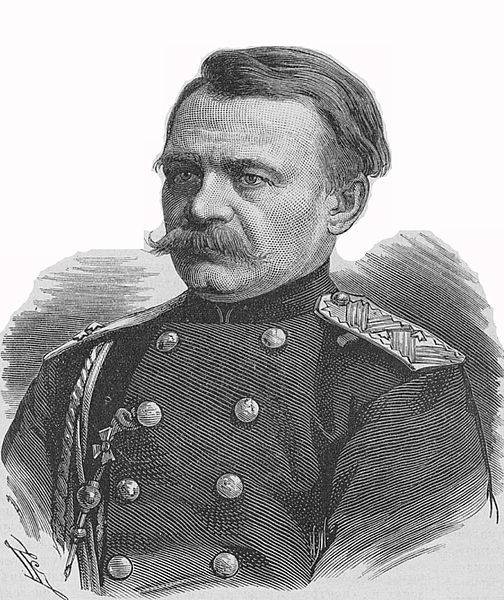
Major General N. G. Stoletov, 1877 Year
Shipka position
At that time, 5, thousands of soldiers with 27 guns, settled on the Shipka Pass. The remaining 1,5 thousand people of the Shipka detachment were partially in reserve in Gabrovo, partially guarded and observed the paths and roads connected to the Shipka passage.
The Shipka position extended in length to 2 km with a width from 60 meters to 1 km. The position stretched along the highway, along a narrow ridge stretching in the meridional direction of the mountain range. This ridge began at Gabrovo, for the length of 10 km it gradually rose to the south and reached the highest point at Nicholas Mountain. From this point, the ridge was quite steeply descending towards the village of Shipke, located on the southern slopes of the Balkans.
Between the Nicholas mountain and the Central (Middle) ridge located to the north of it narrowed to 600100 m, and the road ran along a narrow saddle called the Isthmus. From the west by the Central Mountain, the ridge Marco Krailev Bair, which went from east to west, adjoined to the original ridge almost at a right angle. The first of the heights nearest to the highway on this ridge was called Volyn, or Lateral Mountain; the second one, more distant from the highway, by the Forest mound (mountain), the third - 2500 - 2800 m from the highway - Lysaya Gora. The latter was 10 m higher than the highest point of the ridge - Eagle's Nest on Mount Nicholas. East of the ridge, parallel to it, the ridge ranged in the meridional direction, on which the peaks of Maly Bedek towered were 1500 meters from the highway, Demir-Tepe (Sugar Loaf) and Demijevits (Nipple) at 1400 meters from the highway. The summit of Little Bedek commanded the whole surrounding area and was 24 meters above the Eagle's Nest. With the pass, this ridge was connected by a narrow isthmus, which ran from the Demir-Tepe mountain to the Nikolai mountain. With the exception of the Side Mountain and the Forest Hill, all these peaks were devoid of any vegetation, the slopes of the ridges on which they stood, and the surrounding gorges were covered with dense forest.
From a military point of view, such a mountain relief scheme required the mandatory inclusion in the defense system not only of Lysaya, Bokovoy and Lesnoy kurgan mountains, but also of Maly Bedek, Demir-Tepe and Demijevets. Since, having mastered these commanding heights, the advancing troops could freely bombard the pass, the highway and the positions along it with artillery and even with rifle fire. Derozhinsky, head of the Gabrovsky detachment, and Stoletov, commander of the Shipki garrison, could not do this due to lack of strength. They asked Radetzky to strengthen them for this purpose with at least one regiment, but the commander of the Southern Front refused to do so, citing a lack of reserves. Thus, due to the general weakness of the organization of the defense of the Southern Front, small defenders of Shipka at the onset of large enemy forces inevitably found themselves under crossfire.
In addition, the Ottomans had great opportunities for reaching, walking and surrounding Shipka. To almost all the peaks, located east and west of the highway, from the south and north, paths approached, and in part even the roads. A more distant detour was possible along the Imitli pass from the west and along the Travlenskaya pass from the east. Derozhinsky found it possible only on the Pass of the Pass, on the mountain of the Sacrum, to set up a detachment of the Bulgarian militia, and in three other places he was forced to confine himself to insignificant Cossack posts. Most of the paths and pack trails were not only not defended, they did not even set up observers. Forces for this simply was not.
The Russian garrison to the beginning of the enemy attack was located in the three main groups of fortifications. The southern group of fortifications was called the “Advanced” or “Nikolaevskaya” position; its southern extremity was called the Eagle's Nest. She was occupied by three battalions of the 36 Orlovsky Infantry Regiment with one 9-pound battery, six Krupp steel and three mountain trophy guns. The battery was commanded by an enthusiast of his job, artillery second-lieutenant Kisnemsky, who had just graduated from college, and the calculations consisted of 22 infantrymen (Orlovsky regiment soldier) who had undergone a short training course. Three fortifications were built for the guns: “Big” - for four guns - with a front to the west and south-west, “Small” - for two guns - shelling the highway south of the Nicholas mountain and Maly Bedek mountain, and “Steel” "- six Krupp guns - front to the south-east, east and north-east. In addition to the closures for artillery, lodgments (small trenches) for eight infantry companies were arranged on the mountain of Nikolay. The most difficult to access because of the steepness were the southern and western slopes of Mount Nicholas.
The western group of fortifications was the right flank of the so-called "Main Position", located north of Mount Nicholas. It was occupied by the first battalion of the 36 th Orlovsky regiment, the 5 th and 6 th companies of the same regiment and the 4 pound battery division. The group was commanded by Colonel Depreradovich. The fortifications of this group were located west of the highway on Mount Central. Here was built the "Central Battery" for four guns, shelling Lysaya Mountain, the whole space between this mountain and Nicholas Mountain, Demijevits, Demir-Tepe and Maly Bedek. To the south of the battery were lodgments for the infantry. North of the Central Battery was the unoccupied fortification of the “Old Turkish Battery”. To the west of the Central Battery, on the Volyn Mountain, the 5 and 6 companies of Orlovtsev were stationed without any fortifications; there were only small heaps of stones, a pit and an old Turkish moat to the front to the north. The main approach to the Central Battery from the west passed through the Volyn Mountain. Northeast of the Central Battery there was a Round Battery, converted from the Turkish lunette and having almost circular shelling. To the south, east and north of the Round Battery were lodgments for the infantry. From the east, the forest served as the approaches to the Central and Round batteries.
The eastern group of fortifications formed the “left flank” of the main position. It was occupied by the 2, 3, and 5 of the Bulgarian militia under the command of Colonel Vyazemsky. This group of fortifications consisted exclusively of lodgments located on the southeastern slope of the Severnaya mountain (Shipki). The lodgments were arranged in two tiers, of which it was possible to fire to the east, southeast and south. Approaches from the east there was a forest close to the lodgings. The reserve of all Shipikinsky positions was located on the isthmus between the mountain of Nikolay and the mountain of Central, on both sides of the highway. There were trenches. The reserve consisted of three companies of the 2 Battalion of Orlovtsev, the 1 and 4 of the Bulgarian militia and the division of mountain guns. Immediately at the "Volyn houses" was a dressing station. At the bend of the highway south of Mount Nicholas, east of the Round and west of the Central Battery, landmines were built.
Modern view of the Shipka Pass
Fortifications on their own did not give their defenders any good shelter and shelling, nor a serious obstacle for the enemy, since they were poorly prepared and were not finished. There were no trenches for communication along the front, there were almost no points in the positions, which were naturally sheltered from enemy fire. Despite the small number of the garrison, there were not enough shelters and fortifications. The commander-in-chief and his headquarters considered the Shipka positions only from the point of view of their role in the future offensive of the Russian troops behind the Balkans, and therefore the main attention was paid only to the repair of the road from Gabrovo to the village of Shipka. Shikpi was not given special attention. Subsequently, 26 of August, War Minister Milutin wrote about Shipka positions in his diary: “... For a whole month, the top army commanders did not take care to provide for the defense of the Balkan passes that we occupied and didn’t even wonder what they were doing the aisles ... " Poor troops were provided and supplies, especially the Bulgarian militia were in a difficult situation, many even had guns that were out of order.
Describing the Shipka position, the officer of the German General Staff noted: “It’s difficult to hold out on this position for three days. If one of the students at the military academy chose such a position when solving a tactical task, he would be excluded from the academy. If there was such a professor, who, taking into account the importance of the moral element in the war, would argue that such a position can be defended with good troops for four months against a superior number and a courageous enemy, in cold autumn and in an extremely harsh winter, would be considered insane. "
Thus, because of the mistakes of the Russian command, including the higher one, the defenders could only count on themselves. They were left to their own devices and were not prepared for serious defense against large enemy forces.
To be continued ...
- Alexander Samsonov
- War 1877-1878 years.
"Constantinople must be ours ..." 140 years ago, Russia declared war on Turkey
"Turkey must cease to exist"
How England battled Russia with Austria-Hungary and Turkey
How Russia saved Serbia from defeat
Russian army on the eve of the war with Turkey
Russian Black Sea Fleet on the eve of the war with Turkey
Turkish Armed Forces
“Only on the shores of the Bosporus can the Turks dominate their way ...”
Turkish command was going to arrange the Russian army "Balkan Cannes"
How England in 1877 year tried to repeat the "Crimean scenario" to defeat Russia
Speech by Montenegro on the Russian side distracted a large grouping of the Turkish army
Battle of the Danube
Battle of the Danube. H. 2
Sturm Ardahan
Dramdag and Dayarskoy battles. The failure of the Russian army at Zivin
140 years of heroic defense of Bayazet
As the plan collapsed "Russian Blitzkrieg" in the Balkans
Breakthrough detachment Gurko in Zabalkanie
How "Leo Pleven" gave the Russian army a bloody lesson
Transition of the Danube army to strategic defense
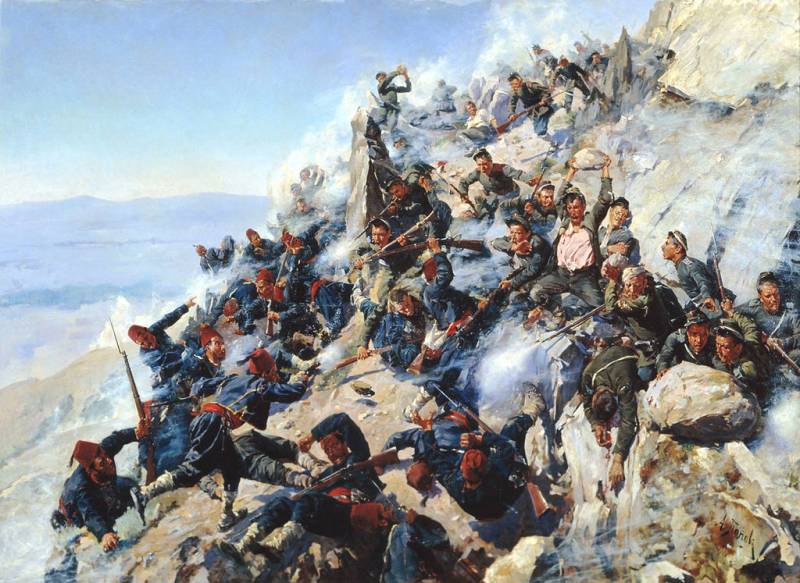
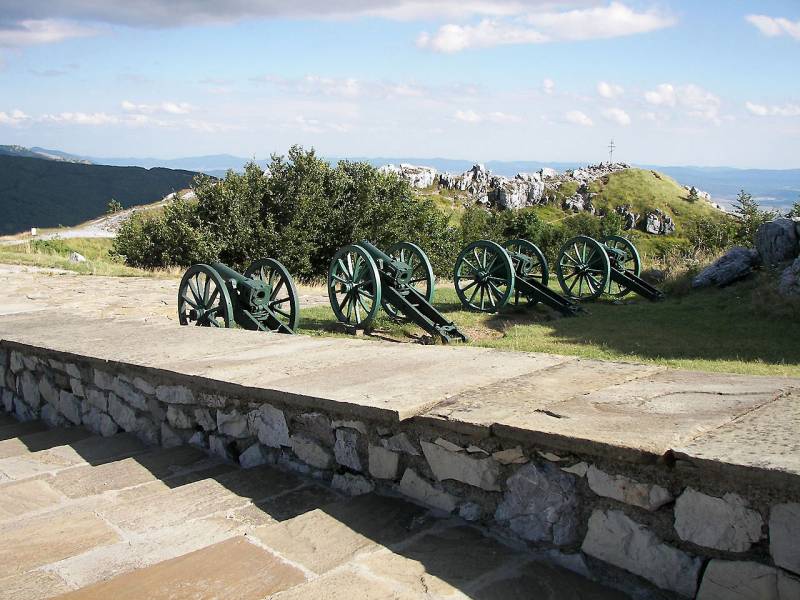
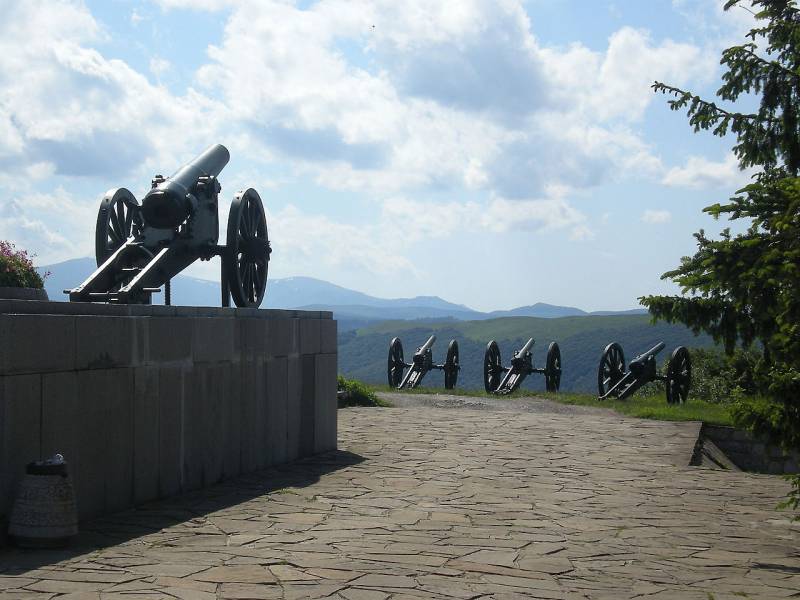
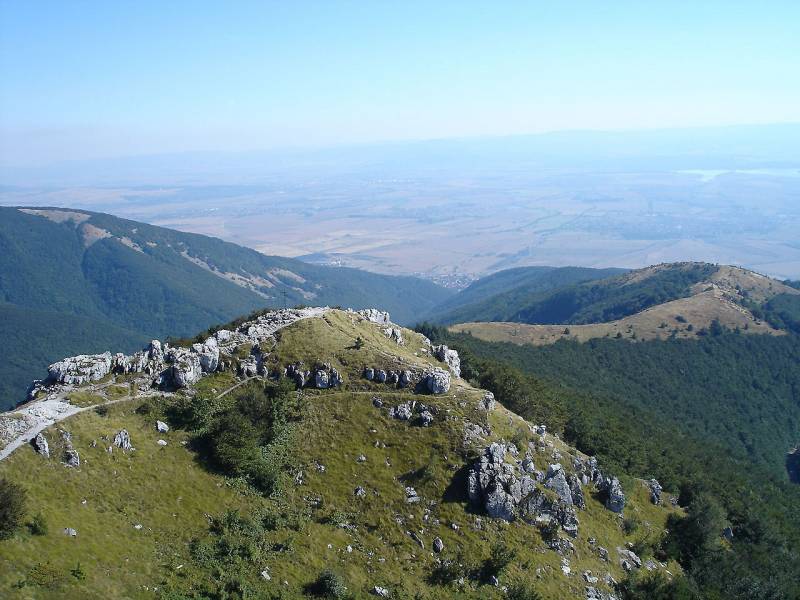
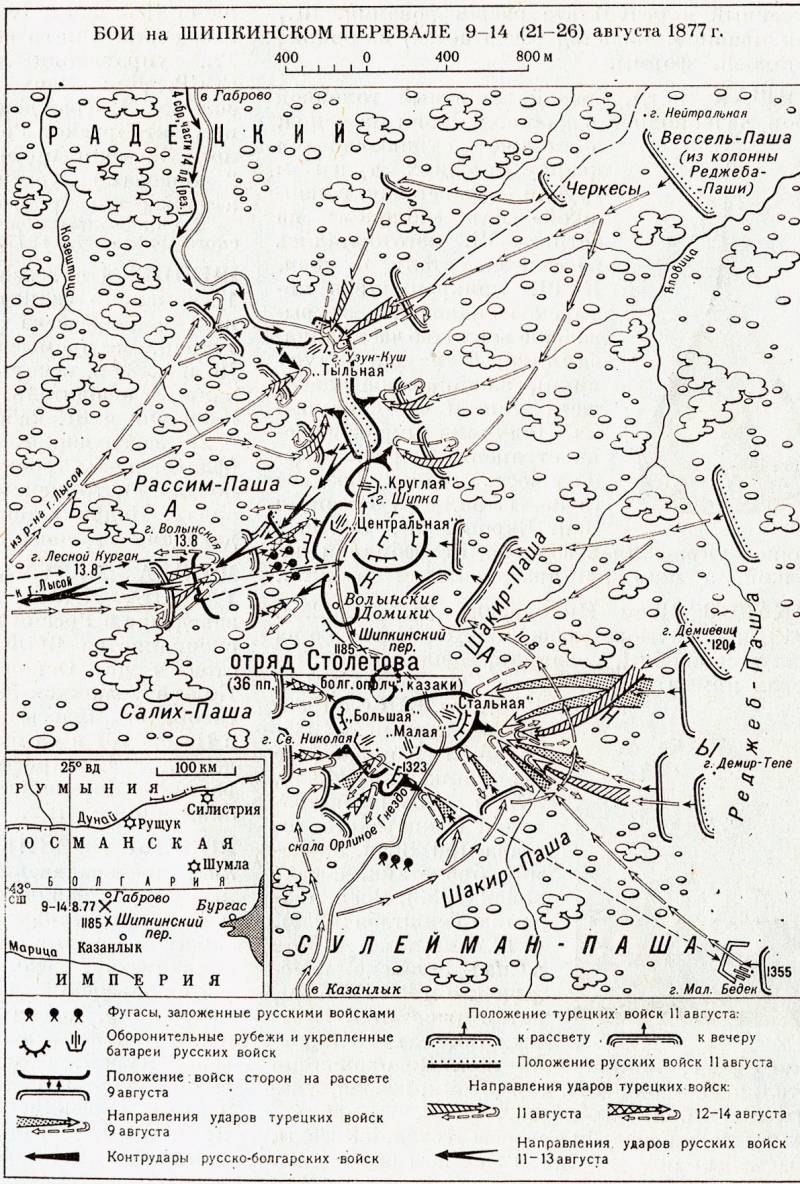
Information